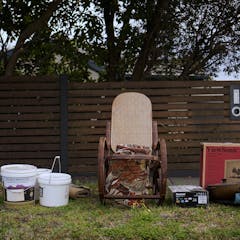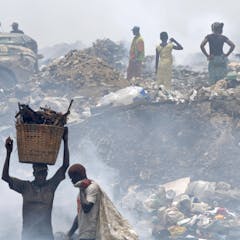
Articles on Landfill
Displaying 1 - 20 of 66 articles

An essential part of managing a growing global waste problem is sorting, recovering and recycling it. But you won’t see this on children’s shows that feature waste collection.

Wind farm owners are keeping old turbines in service to capitalise on high electricity prices.

Understanding the success of the ABC’s War on Waste is a lesson in behavioural psychology. Research reveals five ways to guide other entertainment-education interventions to similar success.

Halloween is a sustainability nightmare – but it doesn’t have to be.

Those who grow their own food in gardens and allotments waste less and eat more healthily – but not everyone has the chance to do so.

Manitoba’s refusal to fund the search for the remains of three Indigenous women is met with denouncement from the Assembly of First Nations.

When food scraps and garden clippings are sent to landfill, it’s not just a waste of nutrients and water. The rotting organic matter trapped in landfill produces methane, a potent greenhouse gas.

Rubbish can be reused or recycled – or it may end up in a dumpsite.

Major sources, like oil and gas ‘super-emitters’, are almost entirely neglected by regulations.

By understanding clothing care labels, you can extend the lifespan of your clothes.

Cheap and easy waste disposal is a highly lucrative business. The lack of regulation in how companies advertise is driving up illegal dumping.

Coffee capsules aren’t the biggest carbon culprits. It’s better to use a capsule than to waste coffee and water.

Not everything needs to be Marie Kondo-ed just because it doesn’t ‘spark joy’. Ask yourself if there’s a less wasteful option.

Employing children as waste pickers lowers costs but exposes them to hazards.

The agriculture and fossil fuel industries are the biggest sources of methane emissions in Australia. Here’s how signing the pledge may affect them.

Could we divert incontinence products from landfill? Yes – if we tackle social stigma and access to affordable health services, encourage biodegradable products and introduce supportive waste policies

The landfill industry’s decision to speak out about the integrity of carbon credits provides an opportunity to put the system back on the rails.

Lagos waste pickers were dissatisfied with their unhealthy working conditions, poverty and stigmatisation.

Priority should be given to improving municipal solid waste management in First Nation communities because they currently lack financial resources, infrastructure and solid waste diversion programs.

Technologies like biomass gasification can help tackle the growing global problem of food waste.
